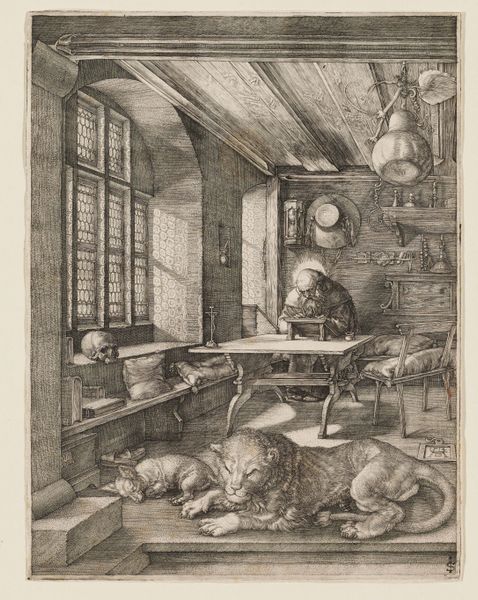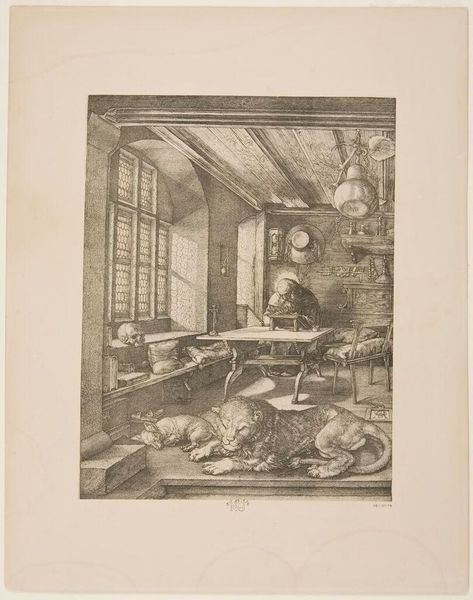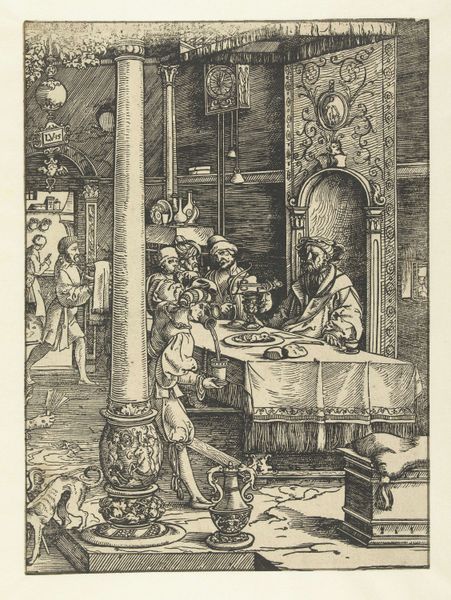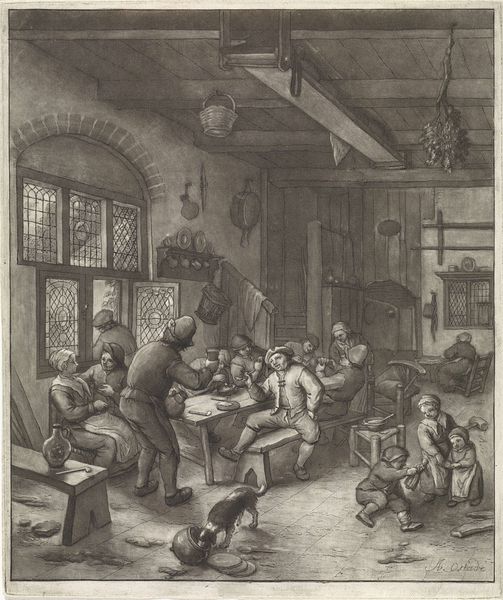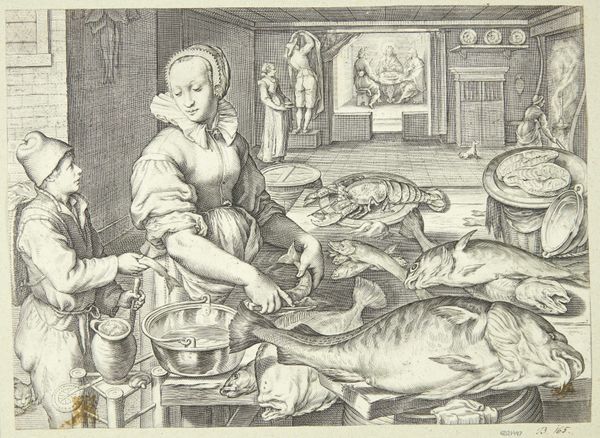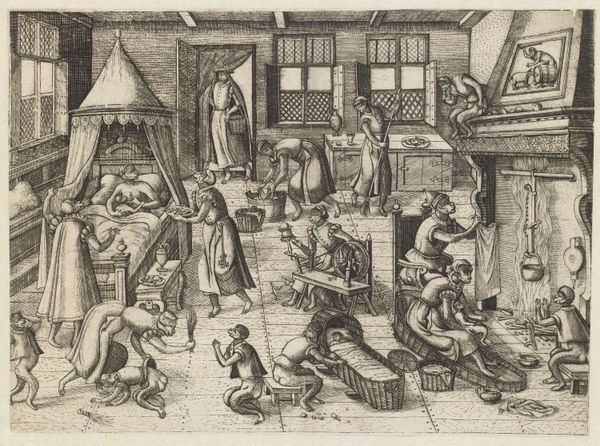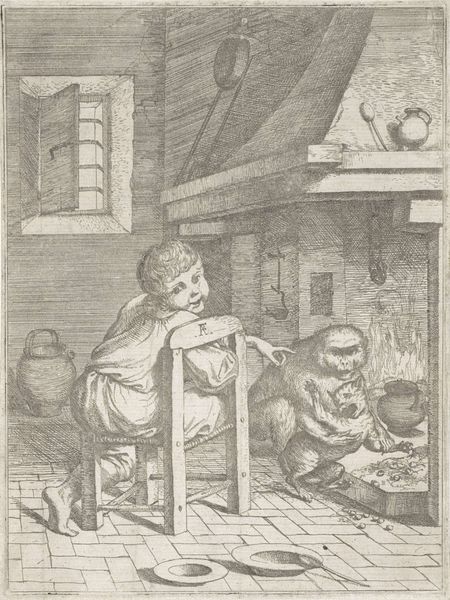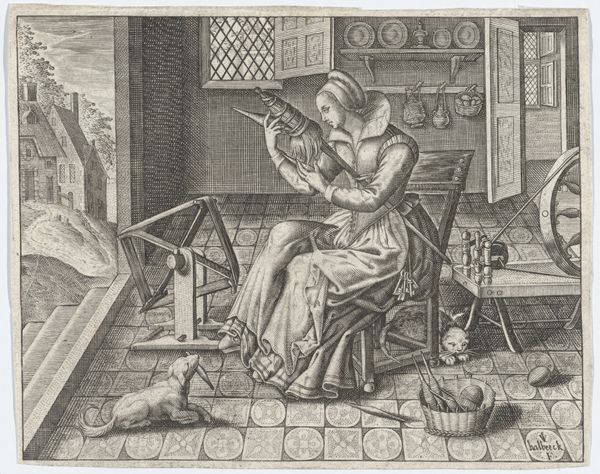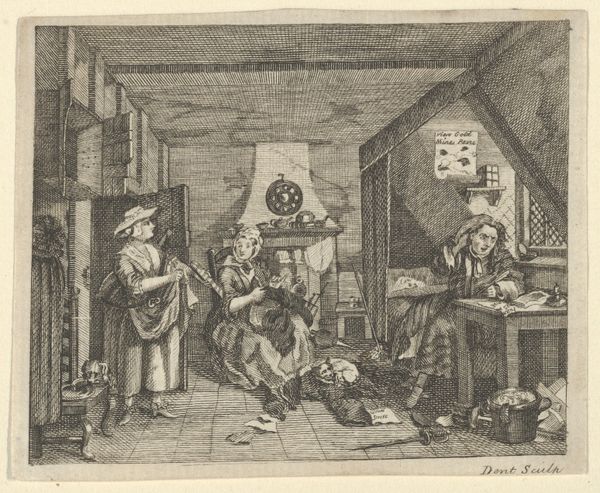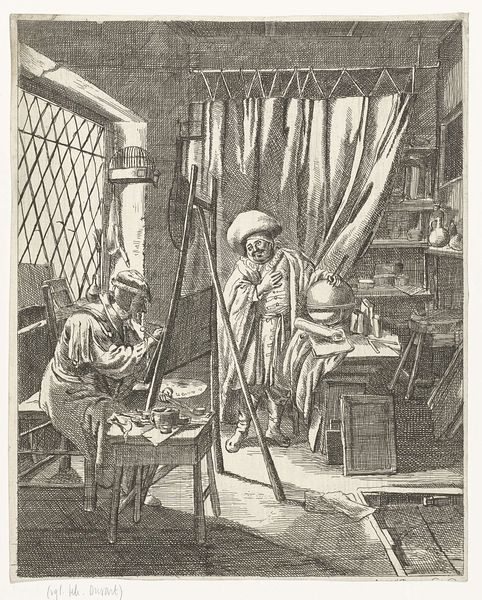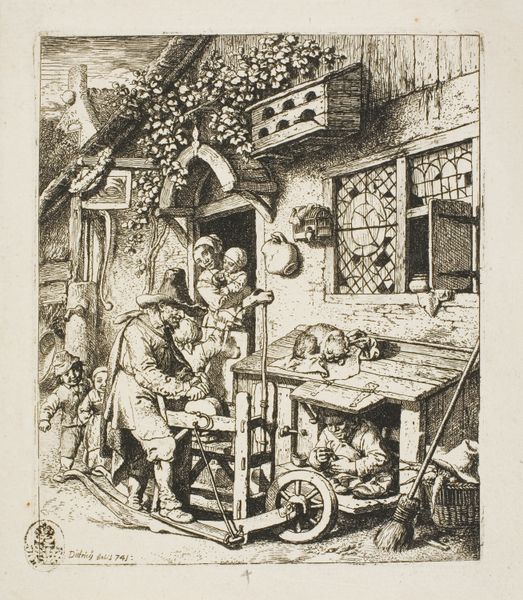
print, engraving
#
medieval
# print
#
landscape
#
line
#
genre-painting
#
history-painting
#
northern-renaissance
#
engraving
#
realism
Dimensions: 9 5/8 x 7 1/4 in. (24.6 x 18.5 cm) (image)
Copyright: Public Domain
Curator: Let's discuss Albrecht Dürer's engraving, "Saint Jerome in His Study," created in 1514, and currently residing at the Minneapolis Institute of Art. My immediate impression is one of contemplative solitude. The tight space, the light filtering through the window...it feels very internal. Editor: Indeed. Looking at the texture achieved through the engraving, I immediately consider the labor involved in producing this image. Every line carefully etched, a testament to the skill of the craftsman, moving this beyond just art and into an arena of production and materiality. Curator: And those lines aren’t just marks, they define forms, illuminate narratives. Jerome, hunched over his work, surrounded by symbolic objects...the skull, the lion...it's rich with meaning. Editor: The use of available resources of the time should not be overlooked. Engraving itself offered Dürer the means for broader distribution and the rise of print culture in the Renaissance period. Curator: True, the engraving process speaks to accessibility. However, consider the iconographic choices. The lion is Saint Jerome's attribute, linked to a legend about him removing a thorn from a lion’s paw, symbolizing his kindness and scholarship. What stands out is the halo of light over Saint Jerome's head. Editor: I agree. How he managed the creation of value to this halo utilizing a painstaking line technique is astounding! But also I see in Dürer’s emphasis on line also speaks to his workshop practices, possibly drawing upon techniques of contemporary metalworkers. Curator: I see the impact. For a sixteenth-century audience, all these symbols reinforced his image as a learned scholar. And his quiet space reinforces this, away from earthly distraction. Editor: The material composition and mode of dissemination speak directly to class. Consider also that Durer’s intended market included a rise of mercantile exchange; printed engravings are also an ideal collectible item. Curator: A fascinating dimension. So, we have, with Dürer, an interplay between iconic symbolism and the growing production and consumption within an emerging middle class in the early 16th century. Editor: Indeed. It reveals to me an intersection of culture and commerce in which the medium becomes inseparable from its social impact. Curator: Seeing how it marries personal reflection and production... illuminating indeed. Editor: Indeed, and also highlighting an exciting era where skill met innovation.
Comments
minneapolisinstituteofart almost 2 years ago
⋮
This engraving has always been regarded as one of Albrecht Dürer’s masterpieces. The scholarly Saint Jerome (c. 347–420 CE) diligently translates the Bible while sitting in his cozy study. He is accompanied by a lion who became his faithful companion when Jerome removed a thorn from its paw. Besides being kind to animals, Jerome was humble yet tremendously learned, able to translate the Bible from Greek and Hebrew into Latin, a language everyday people could read. Dürer treats us to a spectacular display of light entering through tiny round window panes. Jerome’s halo flares even brighter. The metaphorical connection between physical light and spiritual enlightenment is inescapable.
Join the conversation
Join millions of artists and users on Artera today and experience the ultimate creative platform.

